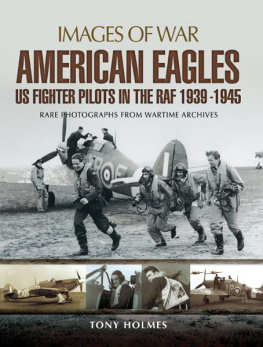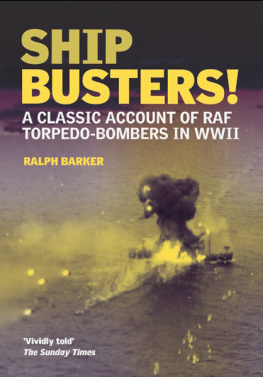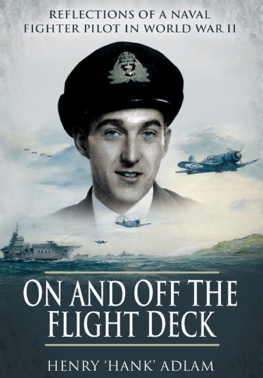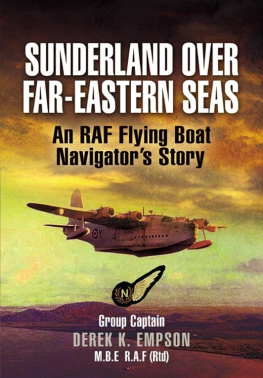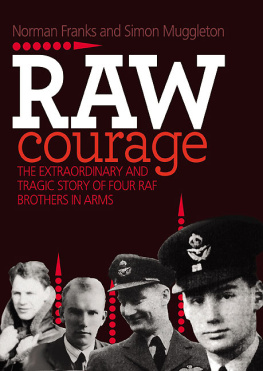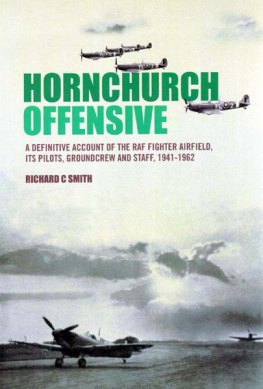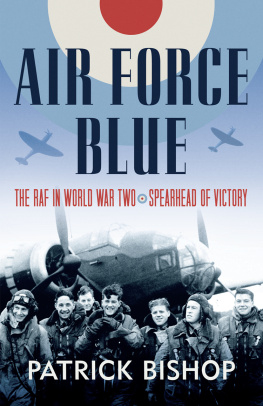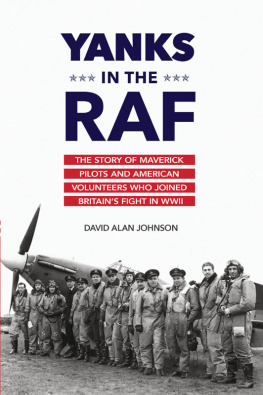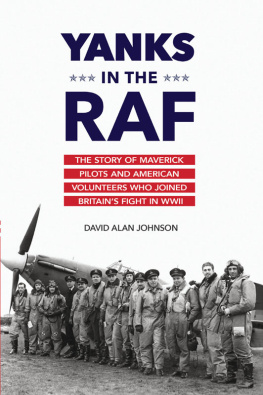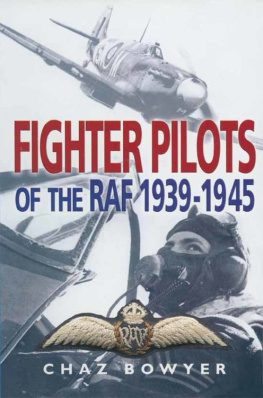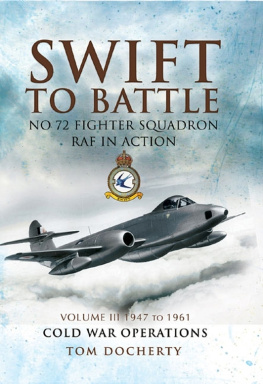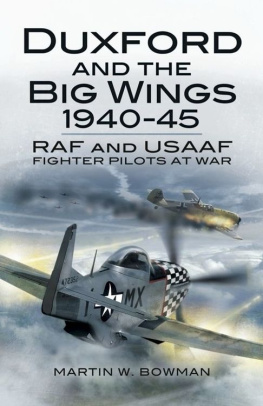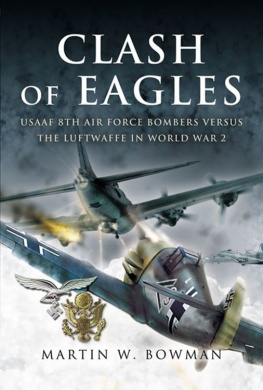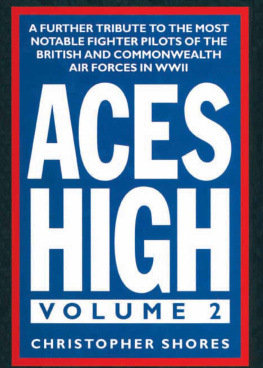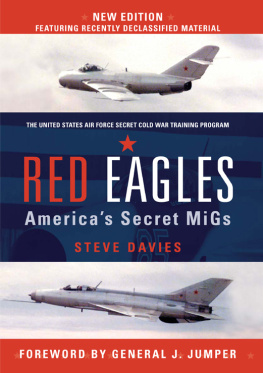First published in Great Britain in 2015 by
P E N & S W O R D A V I A T I O N
an imprint of
Pen & Sword Books Ltd,
47 Church Street, Barnsley,
South Yorkshire.
S70 2AS
Copyright Tony Holmes 2015
ISBN: 978-1-47383-566-5
PDF ISBN: 978-1-47386-654-6
EPUB ISBN: 978-1-47386-653-9
PRC ISBN: 978-1-47386-652-2
The right of Tony Holmes to be identified as Author of this Work has been asserted by him in accordance with the Copyright, Designs and Patents Act 1988.
A CIP catalogue record for this book is available from the British Library
All rights reserved. No part of this book may be reproduced or transmitted in any form or by any means, electronic or mechanical including photocopying, recording or by any information storage and retrieval system, without permission from the Publisher in writing.
Typeset by Mac Style Ltd, Bridlington, East Yorkshire
Printed and bound in the UK by CPI Group (UK) Ltd, Croydon, CRO 4YY
Pen & Sword Books Ltd incorporates the imprints of Pen & Sword Archaeology, Atlas, Aviation, Battleground, Discovery, Family History, History, Maritime, Military, Naval, Politics, Railways, Select, Transport, True Crime, and Fiction, Frontline Books, Leo Cooper, Praetorian Press, Seaforth Publishing and Wharncliffe.
For a complete list of Pen & Sword titles please contact:
PEN & SWORD BOOKS LIMITED
47 Church Street, Barnsley, South Yorkshire, S70 2AS, England.
E-mail:
Website: www.pen-and-sword.co.uk
Contents
Acknowledgements
The author wishes to thank the following individuals (some of whom, sadly, are no longer with us) and organizations for the provision of photographs and information included within this volume:
Aeroplane magazine, Dugald Cameron, CCB Associates, Eddie Creek, Stephen Fochuk, Robert Forsyth, Norman Franks, the late Roger Freeman, Chris Goss, Peter Green, Peter Hall, William Hess, Roy S. Humphreys, Philip Jarrett, Philip Kaplan, Key Publishing, Paul Ludwig, Dick Martin, Wojtek Matusiak, David Oliver, Dr Alfred Price, the late Bruce Robertson, Andy Saunders, the late Jerry Scutts, Sam Sox and Andrew Thomas.
Introduction
American Eagles: US Fighter Pilots in the RAF 19391945 provides a photographic snapshot of the volunteer fighter pilots, and the various aircraft predominantly Spitfires and Hurricanes that they flew with the Royal Air Force (RAF). Keen to help Britain stem the spread of Fascism, or perhaps seeking adventure in a foreign land, a number of American citizens defied the wishes of their government by crossing the border into Canada and subsequently sailing to Britain to join the RAF.
The early volunteers travelled to the UK despite the US government having issued a presidential proclamation in September 1939 specifically banning the recruitment of men for the armed forces of foreign countries from within the USA and its territories. The early arrivals joined four pre-war Americans already serving with RAF Fighter Command, being sent to frontline units defending Britain from attack by the Luftwaffe in the summer of 1940.
The RAFs triumph in the Battle of Britain acted as a spur for many more idealistic young Americans to volunteer for combat. They were helped in their quest by Anglophile Charles Sweeny, a wealthy businessman who had lived in London for a number of years. He had initially recruited men to fly in the French air force, but with the fall of France in June 1940 his recruits joined the RAF instead. Sweenys would-be fighter pilots initially joined the Royal Canadian Air Force (RCAF), before heading for the UK. His contact in Canada was First World War ace Billy Bishop, while in America Sweeny worked with artist Clayton Knight to form the Clayton Knight Committee. By the time the United States entered the war in December 1941, the latter organization had processed and approved 6,700 applications from Americans to join the RCAF or RAF. Sweeny, along with his various wealthy contacts on both sides of the Atlantic, bore the cost (more than $100,000) of processing and bringing the US trainees to the UK for training.
Initially, the recruits were sent to regular units within RAF Fighter Command as attrition replacements. However, in the autumn of 1940, the RAF created the first of three Eagle squadrons that would be manned exclusively by Sweeney recruits. Although initially frustrated by a lack of equipment, 71 Squadron (followed by 121 and 133 Squadrons) would eventually find itself in the thick of the action once the RAF went on the offensive over occupied Europe from early 1941.
Several hundred volunteer pilots also served with regular units within Fighter Command, whilst others flew Spitfires, Hurricanes, Beaufighters and Mosquitoes with RAF squadrons in the Mediterranean, North Africa and the Far East. This American connection continued even after the US Army Air Force (USAAF) had created the Eighth Air Force in Britain in the summer of 1942 all three Eagle squadrons had been transferred to USAAF control in September of that year. Indeed, there were a handful of high-scoring American aces in RAF fighter squadrons during the final eighteen months of the war in Europe.
Men such as Don Blakeslee, Billy Fiske, Gus Daymond, Jim Dunn, Lance Wade and Foob Fairbanks are all featured within the pages of this volume, as well as some of the lesser-known American Eagles. Spitfires and Hurricanes predominate because of their sheer number, and longevity, in frontline service. However, American fighter pilots also flew Mosquitoes, Beaufighters, Havoc Is and Defiants, and these types are illustrated too in photographs that have been carefully sourced from official and private archives across the globe. Each image is accompanied by a detailed caption that chronicles the wartime exploits of the elite band of brothers known as the American Eagles.
Tony Holmes
Sevenoaks, Kent
November 2014
Chapter One
Pre-war Pilots

Two of the four American pilots serving with the RAF before the war were members of the Royal Auxiliary Air Force. Willard Whitney Straight (who had become a British citizen in 1936) and Carl Raymond Davis (of American parentage, although he was born in South Africa) were both part of 601 County of London Squadron. This unit was dubbed The Millionaires Mob as it was staffed by well-to-do gentlemen from the capital and the surrounding Home Counties. Both Straight and Davis reinforced this image, with the former being a millionaire racing car driver, aircraft designer and accomplished private pilot, and Davis a public school graduate and qualified mining engineer. The latter had been a part of 601 Squadron since August 1936, with Straight joining the following year. One of the first five units to be established with the formation of the Royal Auxiliary Air Force in 1925, 601 Squadron had flown a succession of two-seat biplane fighters from its RAF Hendon home. The unit was equipped with Hawker Harts when Pilot Officer Davis joined up, six 601 Squadron machines being seen here in a textbook Aircraft Close Vic formation cruising over Middlesex in the autumn of 1936. Note 601 Squadrons distinctive red winged sword emblem stencilled onto the fins of each aeroplane. In 1937 the Harts made way for the closely related Demon, which boasted a Frazer-Nash hydraulic turret for the gunner sitting behind the pilot.
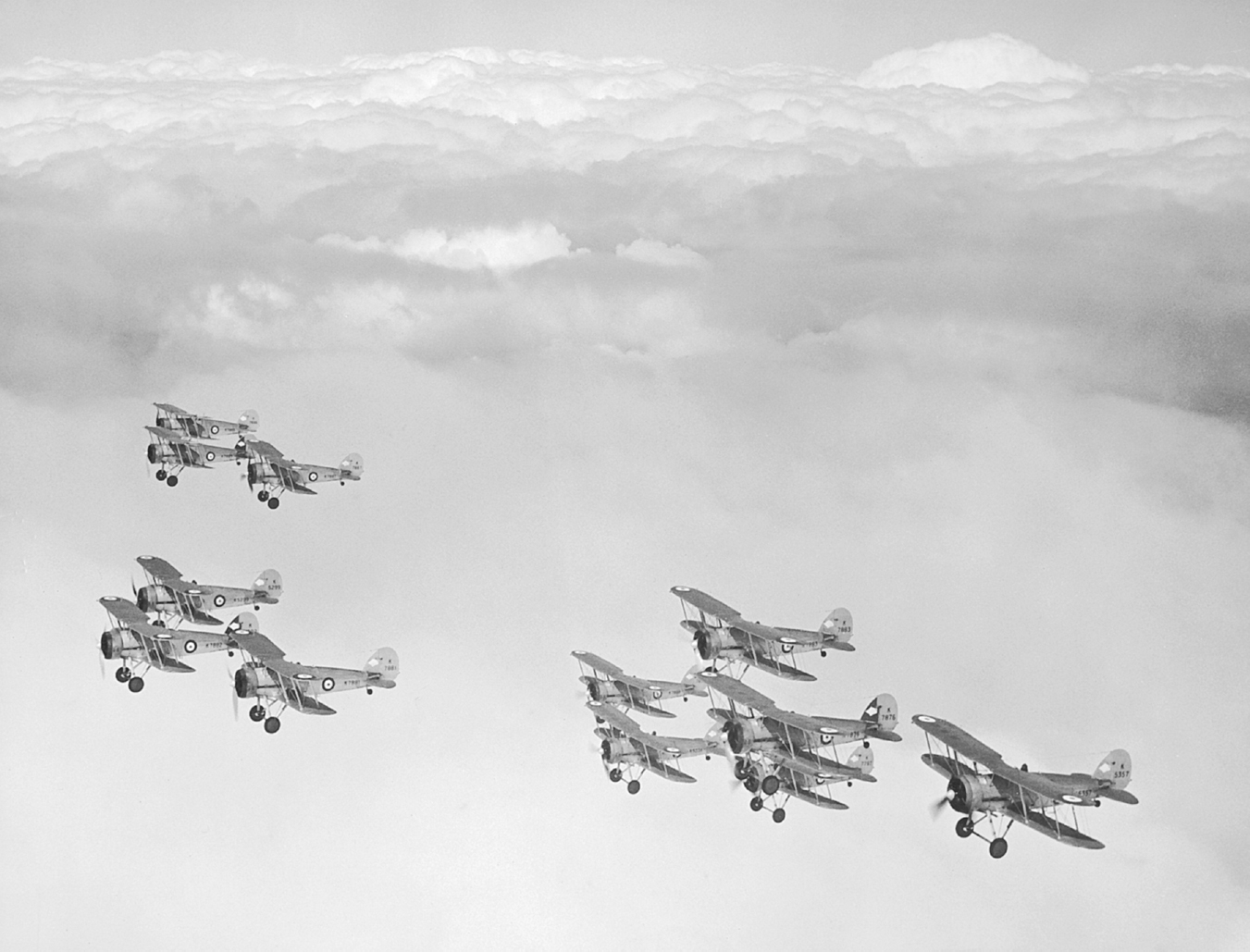
There were also two Americans serving with RAF Fighter Command before the war, namely James William Elias Davies and Cyril Dampier Pussy Palmer. Born in Bernardsville, New Jersey, Davies had travelled to the UK with his British parents during the interwar period and joined the RAF in early 1936. Upon gaining his wings in March 1937, Davies was posted to the newly reformed 79 Squadron at RAF Biggin Hill, in Kent. The unit was equipped with twelve Gloster Gauntlet II fighters, all of which are seen here on the wing for a photographic session with
Next page
